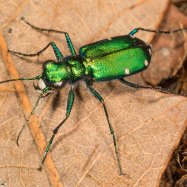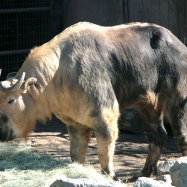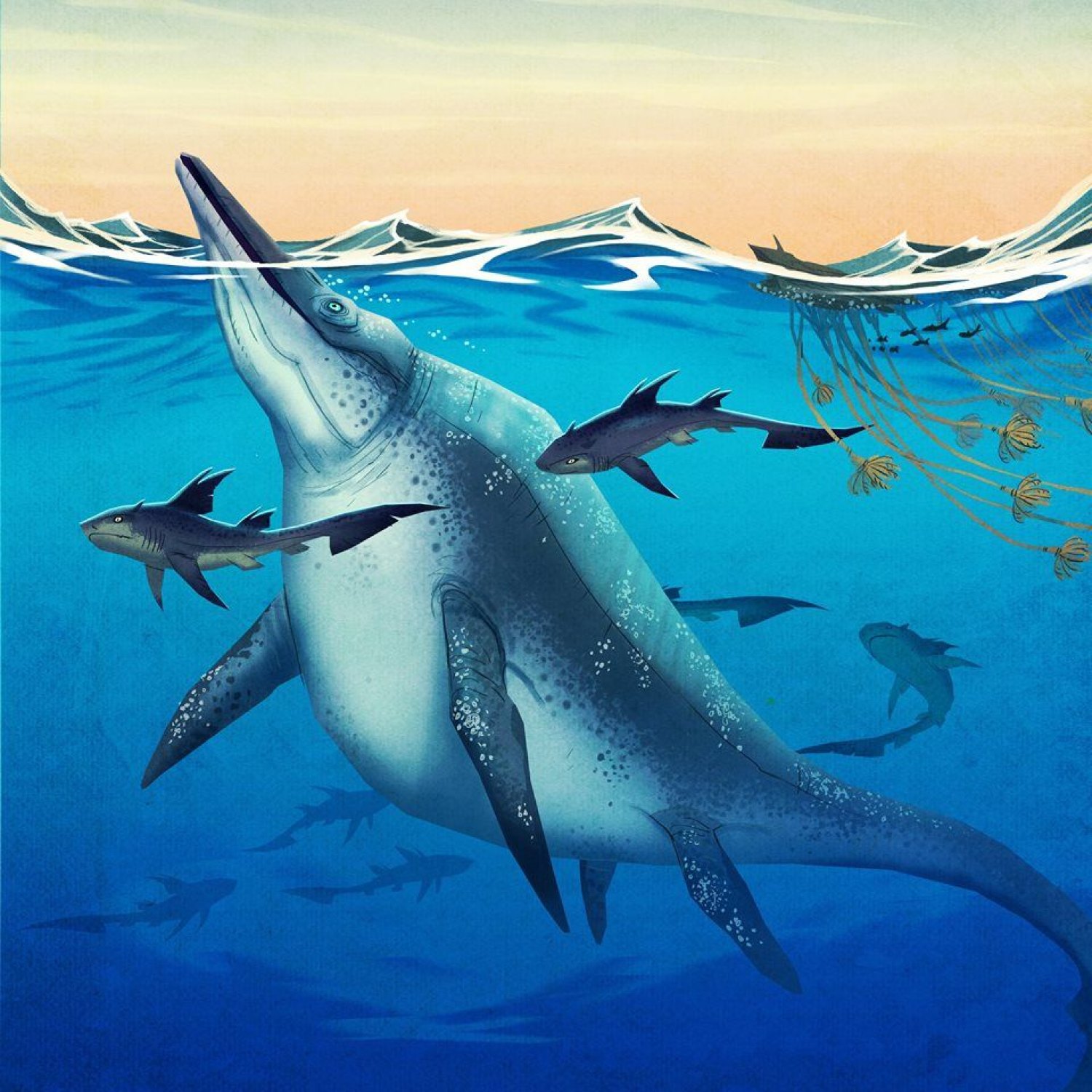
Shastasaurus
Up to 21 meters
Shastasaurus, a prehistoric sea reptile, was a giant in its time, reaching up to 21 meters in length. This streamlined creature, belonging to the Shastasauridae family, lived in what is now Shasta County, California. Its impressive size and shape make it a fascinating creature to study and learn about. #PrehistoricCreatures #Shastasaurus #SeaReptile #Shastasauridae #California #AncientAnimals
Animal Details Summary:
Common Name: Shastasaurus
Kingdom: Animalia
Habitat: Marine
The Enigmatic Giant: Shastasaurus - The Largest Marine Reptile Ever Discovered
Deep in the marine waters of North America lies the impressive and mysterious creature known as Shastasaurus. With a scientific name derived from its origin in Shasta County, California, this gigantic marine reptile has captured the fascination of scientists and people alike. From its massive size to its unique evolutionary features, Shastasaurus is a creature worth learning about and appreciating. Let's dive into the depths of the ocean to uncover the secrets of this remarkable animal Shastasaurus.A Kingdom of Extraordinary Creatures
Shastasaurus belongs to the Animalia kingdom, which encompasses all living organisms that are multicellular, heterotrophic, and eukaryotic. Within this vast kingdom, there are over 1.3 million documented species, ranging from tiny insects to colossal whales. Shastasaurus, with its immense size and aquatic nature, falls into the subcategory of Chordata, meaning that it possesses a notochord, or a backbone, at some point in its life. And within the Chordata, Shastasaurus belongs to the Reptilia class, joining other cold-blooded creatures like lizards, snakes, and crocodiles.The Oceanic Kingdom of Ichthyosaurs
Shastasaurus may be the most massive member of the Ichthyosauria order, which translates to "fish lizards." Despite the misleading name, Ichthyosaurs were not lizards. They were a diverse group of marine reptiles that existed from the early Triassic period to the late Cretaceous period. These creatures were considered the top predators of the ocean, with their streamlined bodies and powerful tails allowing them to hunt and swim efficiently Shetland Sheepdog. Shastasaurus was believed to have roamed the oceans during the late Triassic period, around 220-215 million years ago, making it one of the earliest and largest ichthyosaurs ever discovered.A Family Like No Other
Within the Ichthyosauria order, Shastasaurus was part of the Shastasauridae family, named after its giant member and considered a close relative of the giant marine reptile, Guanlingsaurus. Members of this family had long bodies, small heads, and large eyes, which allowed them to have excellent vision in the dark depths of the ocean. But what sets Shastasaurus apart from other Shastasauridae species is its size, making it the largest known marine reptile in history.A Marine Life Like No Other
When it comes to Shastasaurus, size matters. As mentioned earlier, Shastasaurus is believed to have reached a whopping length of 21 meters, making it larger than other well-known giants like the Mosasaurus, Kronosaurus, and Liopleurodon. Just to put it into perspective, that is roughly the length of two school buses!Adapting to the Marine Habitat
Shastasaurus's streamlined body, along with its fin-like limbs, allowed it to swim swiftly and smoothly through the ocean, enabling it to catch prey efficiently. Its specially shaped tail and flippers were essential for its survival in the marine habitat, and it is believed that they could propel it at high speeds. Along with its powerful built, Shastasaurus's body was also adorned with unique coloration patterns, ranging from dark brown to light gray, making it less visible to its potential predators.A Fierce and Carnivorous Hunter
Shastasaurus was the apex predator of its time. Its massive size alone was an intimidating factor, but its sharp and conical teeth were its most potent weapons. These teeth, estimated to have been around 40 centimeters long, allowed Shastasaurus to seize and tear through its prey effortlessly. Fossil records suggest that its diet mainly consisted of fish and possibly other marine reptiles, like plesiosaurs. Its jaw flexibility and bite strength were so powerful that Shastasaurus could swallow its prey whole, much like modern-day snakes.Discovering the Remarkable Shastasaurus
Shastasaurus was first discovered in 1894 by a team of paleontologists, led by John C. Merriam, in Shasta County, California, which gave the creature its name. Since then, more specimens have been found in Nevada and British Columbia, Canada, with some impressive fossils displaying an incredible level of preservation, revealing detailed features of this fantastic creature. These discoveries have allowed scientists to gain a better understanding of Shastasaurus's physical appearance, behavior, and evolutionary history.An Evolutionary Enigma
The evolution of ichthyosaurs, including Shastasaurus, is still a topic of debate among scientists. Some believe that they evolved from terrestrial reptiles and then adapted to life in the ocean, while others propose that they descended from sea-going animals, like newts and sea snakes. But one thing is for sure, Shastasaurus and other ichthyosaurs were at the peak of their evolution during the Triassic period, making them a significant part of our planet's history.Environmental Changes and Extinction
Despite their well-adapted bodies and successful reign in the world's oceans, Shastasaurus and other ichthyosaurs faced a severe blow during the late Triassic period. Along with other factors like volcanic activity and changes in ocean temperature and acidity, which impacted their food sources, competition with other marine predators, like sharks and pliosaurs, led to their eventual extinction. It is believed that Shastasaurus and other ichthyosaurs disappeared around 201 million years ago, leaving behind a legacy that continues to fascinate us to this day.Reviving an Ancient Sea Monster
More than 100 years after its discovery, Shastasaurus continues to captivate scientists, paleontologists, and people worldwide. Its impressive size, unique physical features, and enigmatic nature make it one of the most talked-about creatures in the world of paleontology. From ancient fossils to museum exhibits and even in popular culture, Shastasaurus has left its mark on our planet and will continue to do so for years to come.The Importance of Preservation and Conservation
Shastasaurus and other ichthyosaurs are an essential part of our planet's history, and it is crucial to preserve and protect these incredible creatures. The ongoing research and study of these fossils have provided us with valuable insights into the evolution of our planet and the diversity of life forms that once existed. By understanding our past, we can better appreciate our present and work towards creating a sustainable future for all living organisms, both on land and in the oceans.In conclusion, Shastasaurus is a remarkable animal and an important part of our natural history. From its massive size, incredible adaptations, and its eventual extinction, this enigmatic creature continues to intrigue and amaze us. As we continue to unravel the secrets of Shastasaurus, we are reminded of the wonders of our planet and the significance of preserving it for generations to come. Let us cherish and appreciate the magnificent creatures that once roamed our planet, and continue to protect and conserve the diverse life forms that call it home.

Shastasaurus
Animal Details Shastasaurus - Scientific Name: Shastasaurus
- Category: Animals S
- Scientific Name: Shastasaurus
- Common Name: Shastasaurus
- Kingdom: Animalia
- Phylum: Chordata
- Class: Reptilia
- Order: Ichthyosauria
- Family: Shastasauridae
- Habitat: Marine
- Feeding Method: Carnivorous
- Geographical Distribution: North America
- Country of Origin: United States
- Location: Shasta County, California
- Animal Coloration: Varied
- Body Shape: Streamlined
- Length: Up to 21 meters
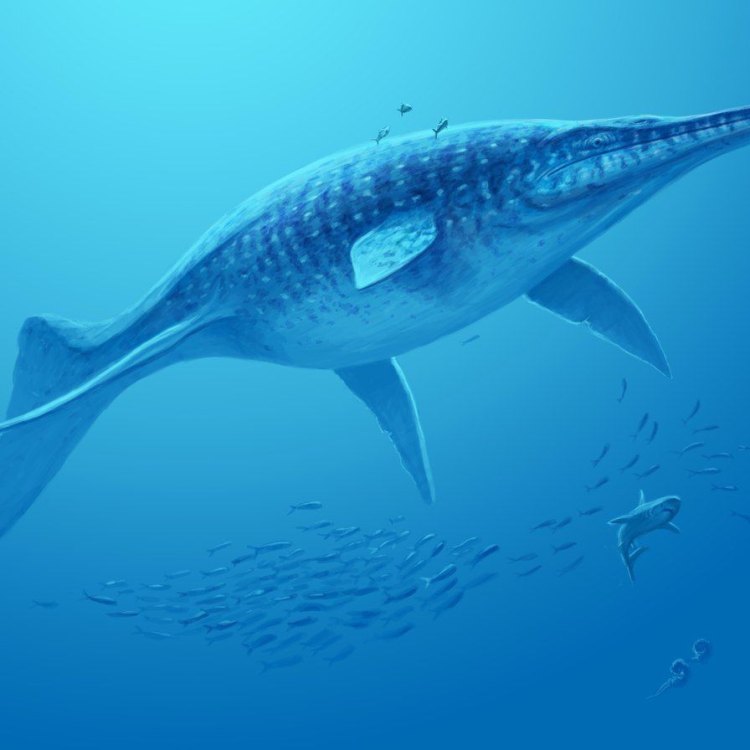
Shastasaurus
- Adult Size: Very large
- Average Lifespan: Unknown
- Reproduction: Sexual
- Reproductive Behavior: Unknown
- Sound or Call: Unknown
- Migration Pattern: Unknown
- Social Groups: Unknown
- Behavior: Unknown
- Threats: Extinction
- Conservation Status: Extinct
- Impact on Ecosystem: Unknown
- Human Use: None
- Distinctive Features: Large size, elongated snout, sharp teeth
- Interesting Facts: Shastasaurus is one of the largest known ichthyosaurs
- Predator: Unknown
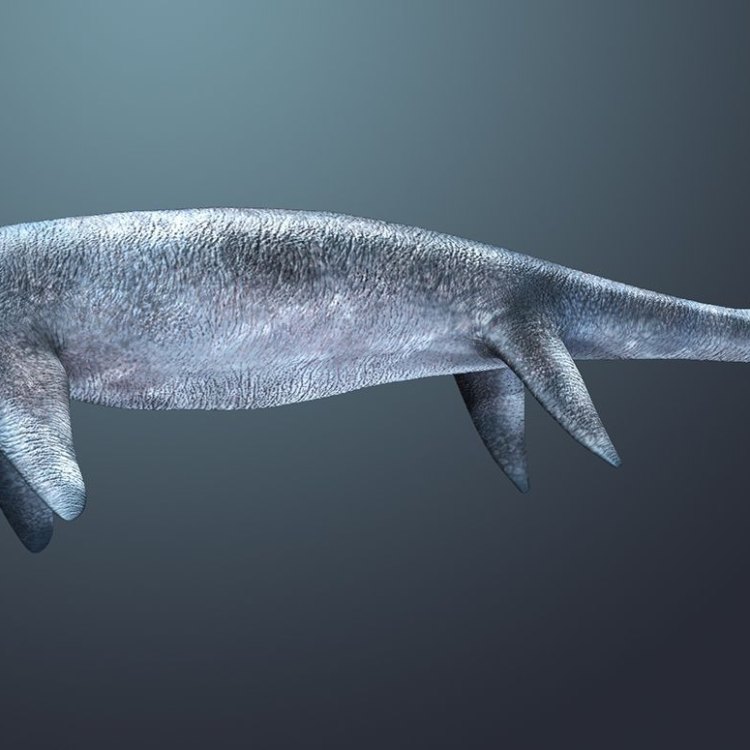
Shastasaurus
The Mysterious Shastasaurus: Exploring the Giant of the Sea
Deep in the waters of the prehistoric world, a creature lurks, larger than any other known to mankind. With a sleek and elongated body, sharp teeth, and a distinctive elongated snout, this giant of the sea was known as Shastasaurus. While it may sound like something out of a sci-fi movie, Shastasaurus was very much a real creature that once roamed the ancient oceans.In this article, we will dive into the fascinating world of Shastasaurus, exploring its physical characteristics, behavior, and the mysteries that still surround this incredible creature PeaceOfAnimals.Com.
A Giant Among Giants
One of the most striking features of Shastasaurus was its size. With an average length of over 65 feet, it was one of the largest known ichthyosaurs – a group of marine reptiles that existed during the Mesozoic Era. Even among its fellow creatures of the sea, Shastasaurus stood out as a giant.To put its size into perspective, let's compare it to some other well-known sea creatures. The great white shark, known for its fearsome size, only reaches an average length of around 15 feet. The blue whale, the largest animal on earth, can grow up to 100 feet in length, but Shastasaurus was not far behind.
A Mystery of Time
Despite its immense size and prominence in the prehistoric oceans, there is still much we don't know about Shastasaurus. Its average lifespan, reproductive behavior, and social groups remain a mystery. With no living specimens or written records, scientists can only speculate about these aspects of its life Sea Squirt.However, one thing we do know is that Shastasaurus lived during the Triassic and Jurassic periods, approximately 245 to 200 million years ago. This makes it one of the oldest known ichthyosaurs, and its existence plays a crucial role in our understanding of prehistoric marine life.
A Quest for Survival
Reproduction is a vital aspect of any species' survival, but unfortunately, it is another mystery surrounding Shastasaurus. As a sexual reproducer, Shastasaurus would have required a mate to produce offspring. However, how they went about this process remains unknown.Some scientists hypothesize that Shastasaurus may have engaged in elaborate courtship behaviors, similar to modern-day whales. Others believe they may have laid eggs on land, like sea turtles, before returning to the sea. Until we discover concrete evidence, the reproductive behavior of Shastasaurus will continue to be a mystery.
A Voice from the Past
In today's world, many animals use sound to communicate and survive, from birds singing to whales' songs. However, we cannot determine the sound or call of Shastasaurus, as no vocal cords or similar structures have been found in fossils. While some researchers have suggested that they may have been able to produce low-frequency sounds, there is no evidence to support this theory.A World Without Borders
Much like modern-day whales and dolphins, Shastasaurus likely had a migration pattern, traveling to different parts of the ocean in search of food or suitable habitats. However, we do not know the specifics of this pattern, and it remains another mystery surrounding this remarkable creature.A Solitary Giant
Another enigma surrounding Shastasaurus is its behavior. Scientists have yet to determine if it was a social creature, living in groups as many marine species do, or if it was solitary. As apex predators, it is possible that Shastasaurus may have preferred to hunt and live alone.However, it is also possible that these creatures may have lived in small social groups, as some studies have suggested that they may have had a high level of intelligence. As with many aspects of Shastasaurus's life, we may never know the answer to this question.
The Grim Future
While Shastasaurus once roamed the oceans as one of the most dominant creatures, its time on earth was unfortunately limited. Like many other prehistoric creatures, it fell victim to the mass extinction event that occurred approximately 201 million years ago, at the end of the Triassic period.Caused by a combination of climate change, volcanic activity, and possibly an asteroid impact, this event wiped out over 90% of all marine life, including Shastasaurus. Despite its incredible size and dominance, even Shastasaurus could not survive the devastating changes that occurred during this time.
Remembering an Extinct Giant
With its extinction, Shastasaurus left a void in the ocean ecosystem, one that was later filled by the appearance of new marine creatures. However, its legacy still lives on through its fossils, which have provided valuable insights into the evolution of marine life.In recent years, researchers have also discovered that Shastasaurus had another unique feature – its stomach. Fossilized remains have been found with stomach contents intact, giving us a glimpse into its diet and revealing that it may have had a taste for squid and other cephalopods.
Even in death, Shastasaurus continues to surprise us and teach us about the past.
A World Without Humans
One of the most intriguing facts about Shastasaurus is that it lived in a time long before humans walked the earth. With no human use or impact on its existence, it serves as a reminder of a world where humans did not rule the planet.As we study and learn about Shastasaurus, we can appreciate how different our world was millions of years ago. It also serves as a sobering reminder of how fragile our ecosystems are and the impact that humans can have on the environment.
An Unforgettable Giant
Even though Shastasaurus became extinct millions of years ago, it continues to capture our imagination and inspire us to learn more about the prehistoric world. Its distinctive features, massive size, and mysteries that still surround it make it a truly unforgettable creature.Who knows what other secrets and surprises Shastasaurus may hold, waiting to be discovered by future generations of scientists. But for now, we can only marvel at this giant of the sea and remember its important place in our planet's history.
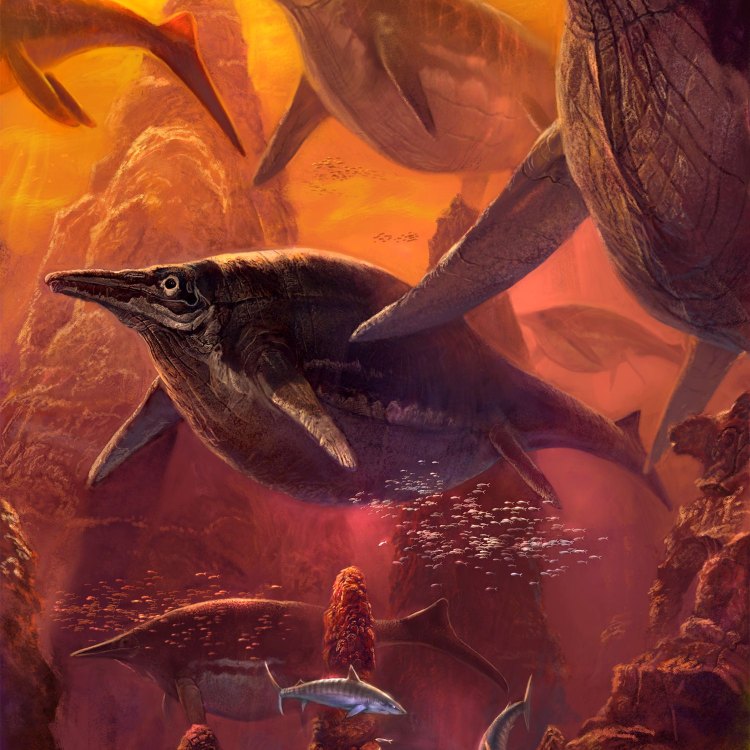
The Enigmatic Giant: Shastasaurus - The Largest Marine Reptile Ever Discovered
Disclaimer: The content provided is for informational purposes only. We cannot guarantee the accuracy of the information on this page 100%. All information provided here may change without prior notice.







